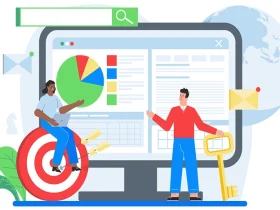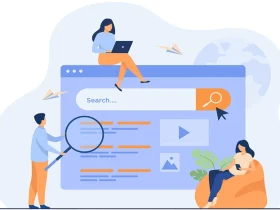
Optimizing your website for improved keyword rankings involves a combination of on-page, technical, and off-page SEO techniques. Here’s a comprehensive guide to help you achieve better rankings:
- Keyword Research: Identify relevant keywords that potential clients use when searching for services you offer. Utilize tools like Google Ads Keyword Planner and Google Trends to discover and analyze these terms.
- High-Quality Content Creation: Develop informative and engaging content that naturally incorporates your target keywords. This not only enhances user experience but also signals to search engines the relevance of your site.
- On-Page SEO Optimization: Implement best practices such as optimizing title tags, meta descriptions, headers, and image alt texts with your chosen keywords. Ensure your content aligns with user intent to improve search engine visibility.
- Regular Content Updates: Keep your website content fresh and up-to-date. Regularly adding new blog posts or updating existing pages signals to search engines that your site is active and relevant.
- Mobile Optimization: Ensure your website is mobile-friendly, as search engines prioritize mobile-optimized sites in their rankings. Use tools like Google’s Mobile-Friendly Test to evaluate and improve your site’s mobile usability.
- Technical SEO: Enhance your site’s technical aspects, including improving page load speed, ensuring proper indexing, and fixing any broken links. A well-structured site facilitates better crawling and indexing by search engines.
- Link Building: Acquire high-quality backlinks from reputable websites to boost your site’s authority. Engage in outreach and create shareable content to encourage other sites to link to yours.
By systematically applying these strategies, you can enhance your website’s visibility and improve its keyword rankings, thereby attracting more potential clients to your websites.
Keyword Research
- Use tools like Google Keyword Planner, Ahrefs, or Semrush to identify high-volume, low-competition keywords.
- Focus on long-tail keywords relevant to your niche, as they often have less competition and higher conversion potential.
- Analyze competitors to find keyword opportunities they’re ranking for.
On-Page SEO
- Content Optimization:
- Use the primary keyword in the title, meta description, H1 tag, and within the first 100 words of your content.
- Include related LSI (Latent Semantic Indexing) keywords naturally throughout the text.
- Write high-quality, engaging, and in-depth content that addresses user intent.
- Title Tags & Meta Descriptions:
- Create compelling and concise title tags (50-60 characters).
- Optimize meta descriptions (120-160 characters) with a call-to-action.
- URL Structure:
- Keep URLs short, descriptive, and keyword-rich.
- Internal Linking:
- Link to relevant pages within your site to improve navigation and spread link equity.
- Optimize Images:
- Compress images to improve loading speed.
- Use descriptive filenames and alt text containing keywords.
Technical SEO
- Website Speed:
- Use tools like PageSpeed Insights to identify and fix speed issues.
- Minimize CSS, JavaScript, and image file sizes.
- Implement lazy loading for images.
- Mobile Optimization:
- Ensure your site is mobile-friendly with a responsive design.
- Site Structure:
- Use a clear and logical structure with a proper sitemap.xml.
- Implement breadcrumb navigation.
- Fix Broken Links:
- Regularly scan for and fix 404 errors or broken links.
- Secure Website:
- Use HTTPS for secure browsing.
- Structured Data:
- Implement schema markup to enhance search engine understanding of your content.
Content Strategy
- Regular Blog Posts:
- Publish fresh and relevant content consistently.
- Address trending topics and evergreen content for consistent traffic.
- Content Refreshing:
- Multimedia:
- Include videos, infographics, and interactive elements to boost engagement.
Off-Page SEO
- Backlink Building:
- Acquire backlinks from reputable websites in your niche.
- Use guest posting, broken link building, and outreach campaigns.
- Social Signals:
- Promote content on social media platforms to increase visibility.
- Local SEO:
- Optimize for local searches by claiming your Google My Business profile.
- Encourage customer reviews on Google and Yelp.
Analytics and Monitoring
- Use tools like Google Analytics and Google Search Console to track performance.
- Monitor keyword rankings, organic traffic, bounce rate, and conversion rates.
Identify pages with high impressions but low click-through rates (CTR) and optimize their meta tags.




